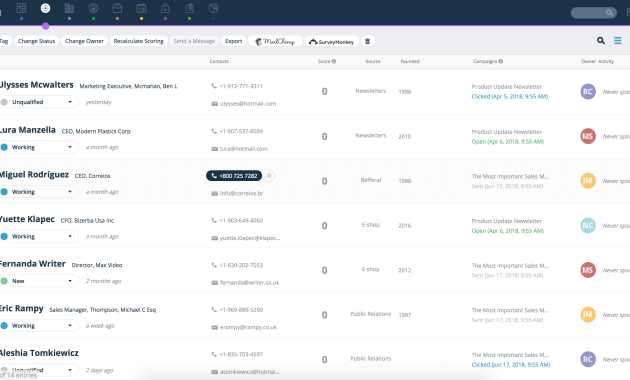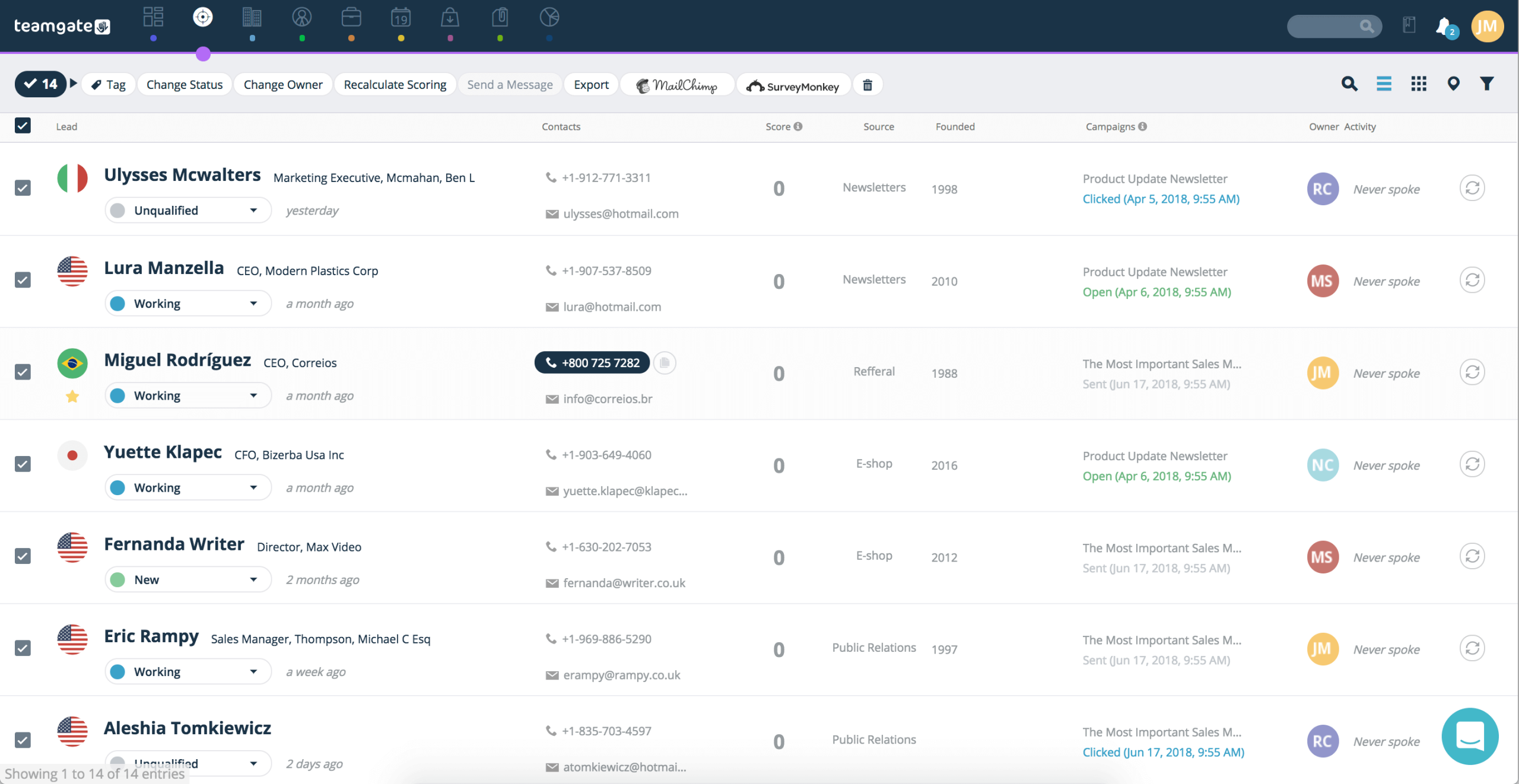
How to Boost Leads by CRM Software: A Comprehensive Guide for Businesses
In today’s competitive business landscape, generating and nurturing leads is crucial for sustained growth. Customer Relationship Management (CRM) software has emerged as a powerful tool to streamline this process. This article provides a comprehensive guide on how to boost leads by CRM software, exploring its functionalities, benefits, and practical implementation strategies.
Understanding the Power of CRM in Lead Generation
CRM software is more than just a contact management system. It’s a centralized hub for all customer interactions, providing valuable insights into customer behavior and preferences. This data-driven approach empowers businesses to make informed decisions and tailor their marketing efforts for maximum impact. By leveraging the capabilities of CRM, companies can significantly improve their lead generation and conversion rates.
Key Features of CRM Software for Lead Generation
Several key features of CRM software directly contribute to lead generation success:
- Contact Management: Centralized storage and organization of contact information, including lead details, communication history, and sales interactions.
- Lead Scoring: Assigning numerical values to leads based on their engagement and behavior, helping prioritize the most promising prospects.
- Lead Segmentation: Grouping leads based on shared characteristics, such as demographics, interests, and purchase history, to personalize marketing campaigns.
- Marketing Automation: Automating repetitive marketing tasks, such as email campaigns, social media posting, and lead nurturing workflows.
- Sales Automation: Streamlining sales processes, including lead assignment, follow-up reminders, and sales pipeline management.
- Reporting and Analytics: Providing real-time insights into lead generation performance, conversion rates, and sales effectiveness.
How CRM Software Boosts Leads: Step-by-Step Guide
Implementing CRM for Lead Capture
The first step in boosting leads by CRM software is to capture them effectively. This involves integrating CRM with various lead capture tools:
- Website Forms: Integrate CRM with website forms to automatically capture lead information.
- Landing Pages: Create dedicated landing pages for specific marketing campaigns and integrate them with CRM.
- Social Media: Use social media lead generation tools to capture leads directly from social platforms.
- Live Chat: Integrate live chat functionality to capture lead information and provide instant support.
- Import Leads: Import leads from external sources, such as trade shows and purchased lists.
Lead Scoring and Prioritization
Once leads are captured, CRM software allows you to score and prioritize them. This process involves assigning numerical values based on lead behavior:
- Demographic Information: Age, location, job title, and company size.
- Engagement Metrics: Website visits, email opens, and content downloads.
- Behavioral Data: Product page views and purchase history.
- Lead Qualification: Determine if they meet your ideal customer profile.
Prioritizing leads based on their scores ensures that your sales team focuses on the most promising prospects, maximizing conversion rates. This is how to boost leads by CRM software effectively.
Nurturing Leads with Targeted Campaigns
CRM software facilitates lead nurturing through targeted marketing campaigns. This involves:
- Email Marketing: Creating and automating email sequences to educate and engage leads.
- Personalized Content: Delivering tailored content based on lead segmentation and interests.
- Drip Campaigns: Sending a series of automated emails over time to nurture leads.
- Segmentation: Grouping leads based on their behaviors and interests.
Nurturing leads through targeted campaigns increases their likelihood of converting into customers. This is a vital part of learning how to boost leads by CRM software.
Sales Automation and Pipeline Management
CRM software streamlines sales processes through automation, improving efficiency and closing deals faster. It includes:
- Automated Task Reminders: Setting reminders for follow-ups, calls, and meetings.
- Automated Email Templates: Sending pre-written emails for common sales interactions.
- Sales Pipeline Management: Tracking leads through the sales pipeline.
- Deal Stage Tracking: Monitoring the progress of deals.
Sales automation helps sales teams focus on closing deals, thereby boosting leads by CRM software.
Selecting the Right CRM Software
Choosing the right CRM software is crucial for lead generation success. Consider the following factors:
- Business Needs: Evaluate your specific requirements and choose a CRM that aligns with your business goals.
- Scalability: Select a CRM that can scale as your business grows.
- Integrations: Ensure that the CRM integrates with your existing tools and platforms.
- User-Friendliness: Choose a CRM that is easy to use and navigate.
- Cost: Consider the pricing plans and ensure that the CRM fits your budget.
- Customer Support: Look for CRM providers with excellent customer support.
Best Practices for Maximizing Lead Generation with CRM
To effectively boost leads by CRM software, adhere to these best practices:
- Data Accuracy: Maintain accurate and up-to-date data in your CRM.
- Data Cleansing: Regularly cleanse your CRM data to remove duplicates and outdated information.
- User Training: Provide comprehensive training to your team on how to use the CRM effectively.
- Regular Reporting: Track your lead generation performance and analyze your results.
- Continuous Improvement: Continuously optimize your lead generation strategies based on data and feedback.
Measuring the Impact of CRM on Lead Generation
Measuring the impact of CRM on lead generation is essential to assess its effectiveness. Key metrics to track include:
- Lead Conversion Rate: The percentage of leads that convert into customers.
- Sales Cycle Length: The time it takes to close a deal.
- Cost Per Lead: The cost of acquiring each lead.
- Customer Lifetime Value: The total revenue generated by a customer over their lifetime.
Analyzing these metrics provides valuable insights into the ROI of your CRM investment. This allows you to refine your strategies and maximize the benefits of boosting leads by CRM software.
Real-World Examples of CRM Success
Numerous businesses have successfully used CRM software to transform their lead generation efforts. Consider these examples:
- Increased Conversion Rates: Businesses that have implemented CRM have seen a significant increase in lead conversion rates.
- Improved Sales Efficiency: CRM has streamlined sales processes, allowing sales teams to close deals faster.
- Enhanced Customer Engagement: CRM has enabled businesses to personalize customer interactions.
- Better Lead Qualification: CRM systems help to filter qualified leads.
These examples demonstrate the tangible benefits of boosting leads by CRM software.
Conclusion: Embracing CRM for Lead Generation Success
CRM software is a powerful tool that can significantly improve lead generation efforts. By implementing the strategies outlined in this guide, businesses can capture, nurture, and convert leads more effectively. Understanding how to boost leads by CRM software and embracing a data-driven approach is key to achieving sustainable growth in today’s competitive market. Implement these strategies to boost sales and improve customer relations.
[See also: Related Article Titles]

